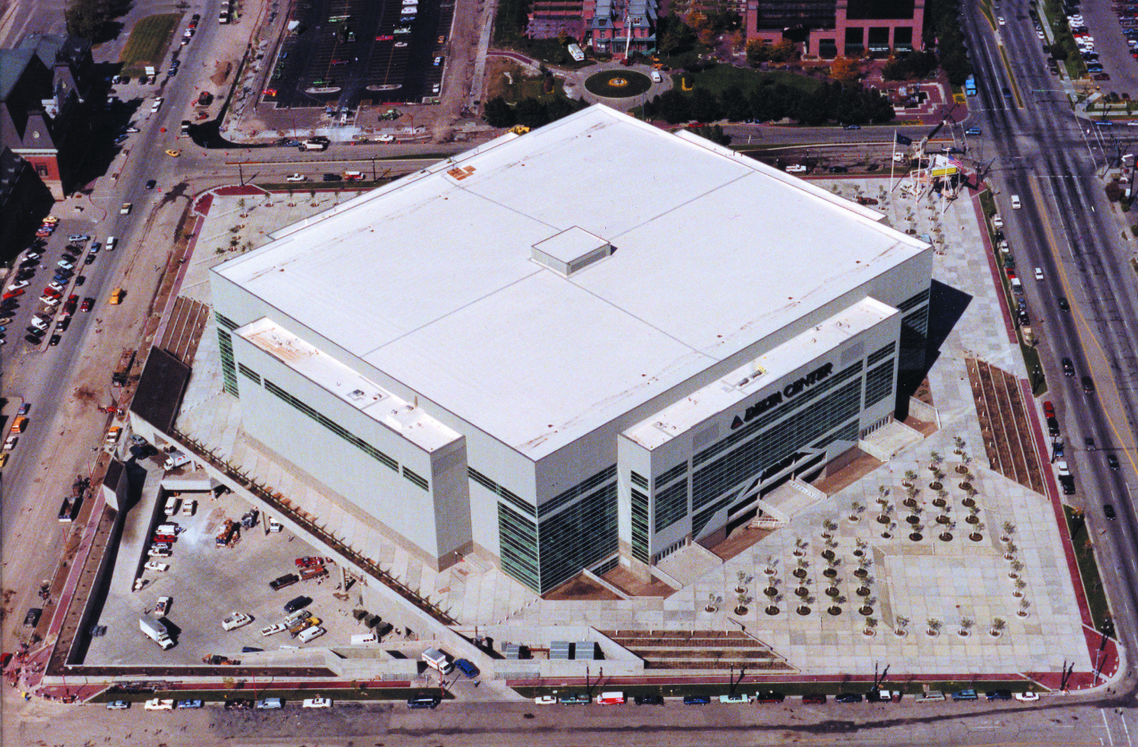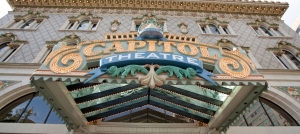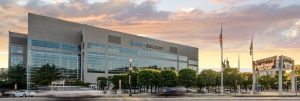The Legacy Three
Though Friedrich Nietzsche’s timeless quote, “That which does not destroy me makes me stronger,” has been used countless times to describe struggles both large and small by personalities ranging from G. Gordon Liddy to Kanye West, there is likely no more apropos words to personify Salt Lake City’s beloved pillar performing arts organizations: Ballet West and Utah Symphony | Utah Opera.
While dwindling public and private support during the Great Recession forced opera houses, ballets and symphonies across the country—many larger than their Utah counterparts—to close their doors permanently, Ballet West and Utah Symphony | Utah Opera endured. Utah’s resilient economy and faithful local audiences helped the Legacy Three survive the country’s worst financial times since the Depression. But ask representatives from each how their respective organization managed to come out on the other side of those challenging times stronger and more popular than ever, and you’ll get the same answer: an unwavering commitment to artistry.
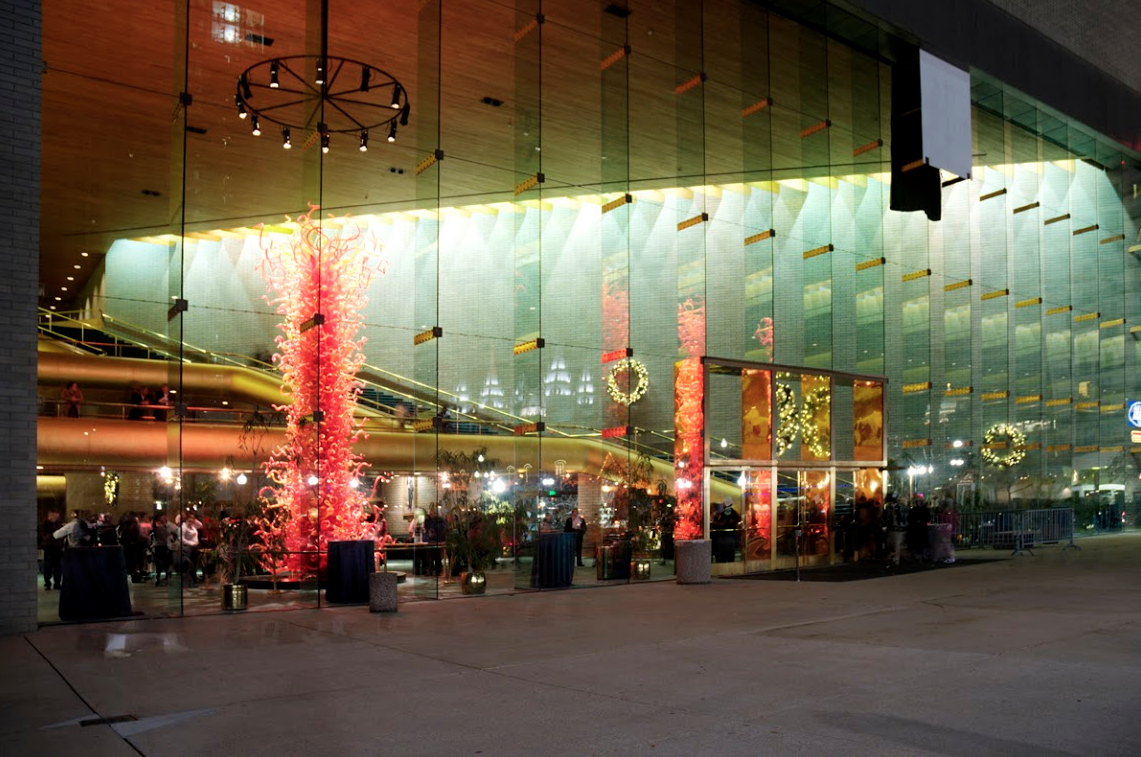
Utah Opera
The pursuit of excellence by Salt Lake City’s youngest cultural anchor—the Utah Opera (founded in 1978 by native Utahn Glade Peterson)—is based in the presentation of carefully curated seasons juxtaposing classic operas with more contemporary works. “I’m known for taking artistic risks, but there’s a fine balance when presenting new pieces,” says Utah Opera Artistic Director Christopher McBeth. “On the micro level, we include something recognizable within every season to help develop new audiences. On the macro level, world premieres or newer works are presented more strategically over the course of five or more seasons.”
Reflecting what McBeth points out as a current industry trend toward grand-scale productions, the Utah Opera’s 2015-16 season line up—Tosca, The Merry Widow, Aida and The Marriage of Figaro—falls squarely in the greatest hits category. “The complete season is ideal for both new and veteran opera goers, but if I had to recommend two I’d have to say Tosca, a famous, very realistic opera, written in a very cinematic way, set to music that’s better than any film score. It’s an ideal choice for those new to opera,” he says. “And Aida, a very grand, over-the-top opera with big colorful sets with lots of people on stage and a storyline that includes plenty of shock and awe, will dazzle even the most experienced opera aficionado.”
Other ways the Utah Opera is maintaining its artistic relevancy is by seeking out the next generation of singing actors. “To keep the art form alive, we need to showcase new talent,” McBeth says. To this end McBeth spends the off-season taking in operatic performances and festivals across the country and abroad looking for fresh talent, often casting singers right out of conservatory. But that doesn’t mean he eschews the established veterans. “We’ve found that the casts audiences enjoy the most are those made up of both established and emerging actors,” he says.
By combining old and new, both in terms of the operas selected for production and the actors cast to bring those stories alive, the Utah Opera treats audiences to a rare sense of discovery. “Our audiences know that every time they come to the theater they will not only get to see a high quality production, but they will also—even if they are seeing an opera for hundredth time—get to experience something new,” he says.
Ballet West
Similar to its operatic counterpart, Utah’s second-oldest Legacy Three performing arts organization, Ballet West, was built on an artistic foundation spanning both classic and new works. Hinged on founder Willam Christensen’s interpretation of American classical ballet, the company became a beloved fixture from its founding in 1963, particularly for Christensen’s renowned The Nutcracker, which remains a pillar of the company’s repertoire to this day. But over the past several years, a series of events—some intentional others serendipitous—have heralded in an unprecedented era at the Intermountain West’s preeminent dance company, high times that even Christensen probably never dared to dream of.
Foremost in Ballet West’s recent emergence is Artistic Director Adam Sklute, a 23-year veteran of the Joffrey Ballet, appointed to his current post in 2007. Under Sklute’s direction Ballet West has presented more than 55 world premieres, revived lost elements of Christensen’s beloved The Nutcracker, and introduced the wildly popular annual Innovations program. The company has also pursued a very active touring schedule, including two acclaimed runs of The Nutcracker at Washington D.C.’s Kennedy Center for the Performing Arts in 2012 and 2014 and a March 2015 residency at New York City’s Joyce Theater where the company performed the world premiere of Helen Pickett’s Games.
Likely as a result of Sklute’s diligence in elevating Ballet West’s national profile, in 2012 the company was featured on The CW’s reality television series, Breaking Pointe. The show, running for two seasons, made celebrities of its principal dancers and brought unparalleled brand awareness to the company, particularly in the social media realm.
And then in December 2014, Ballet West opened the long-awaited, 55,000-square-foot, $22 million Jessie Eccles Quinney Ballet Centre, an achievement Executive Director Scott Altman called “a watershed moment” for the 52-year-old ballet company. “Ballet West’s artistry has always been world class. Now that the Centre is complete we can build on all the remarkable work that came before with the talent assembled in our development in marketing teams and really take advantage of this new invigorated moment in time for Ballet West,” Altman says.
The proof is in the numbers. Tickets sales for Ballet West’s 2014-15 season were up 16 percent overall and revenue at the Ballet West Academy, one of the most renowned dance education institutions in the country with eight studios at three locations (downtown at the new Ballet Centre, at Trolley Square and at Thanksgiving Point), was up 70 percent. Perhaps the year’s most significant fiscal achievement, however, was elimination of the company’s 33-year operational debt.
Ballet West’s plans to maintain this extraordinary momentum in the 2015-16 season with an array of classic favorites, modern masterpieces and contemporary works. Iconic Classics opens the season in November with a diverse triple bill including Fancy Free, On An Overgrown Path and Symphony in C. In December, the company presents the 60th anniversary of The Nutcracker. Romeo & Juliet makes its Utah debut in February. Opening in April is The Nijinsky Revolution, three modern retellings of the legendary-dancer Vaslav Nijinsky’s groundbreaking choreography. The season rounds out in April with the return of Innovations, a showcase of cutting-edge and up and coming choreographers. “Our 2015-16 season shows off the breadth and scope of our repertoire and the astonishing versatility of our dancers,” Sklute says. “Our dancers are great athletes, artists and story-tellers, and our productions are of the highest caliber. Few companies in the world can master a repertoire that is so rich and varied. It is a groundbreaking season with something for everyone and I am so excited to present it to our audiences.”
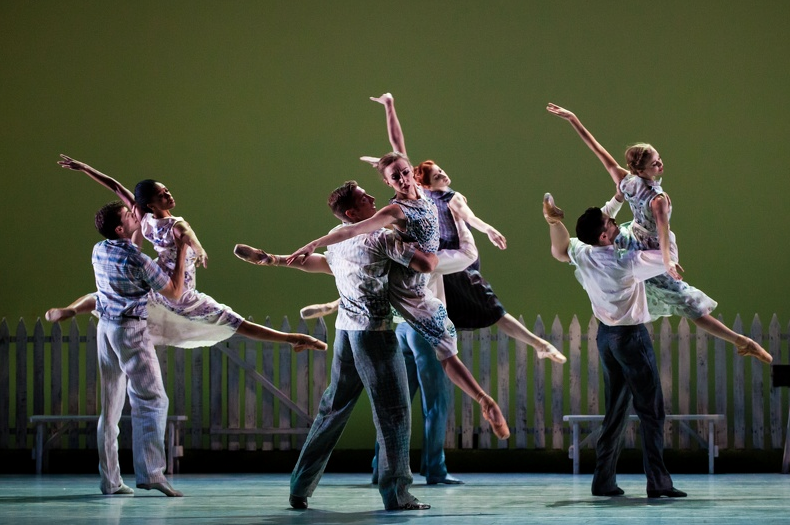
Utah Symphony
Presenting something for everyone is exactly how Utah’s patriarch arts organization, the Utah Symphony, built a worldwide reputation for uncompromising artistry. Maurice Abravanel, symphony music director from 1947 to 1979, nurtured the fledgling orchestra (formed in 1940) into a leading American ensemble, leading the symphony on four international tours, releasing more than 100 recordings and developing an extensive music education program. Today, the Utah Symphony presents more than 70 performances each season at Abravanel Hall and participates in the Utah Opera's four annual productions at the Capitol Theatre (The symphony and opera merged operations in 2002.) in addition to numerous community concerts throughout Utah and the annual outdoor summer series in Park City, the Deer Valley Music Festival.
Most would agree, however, that in the last several years the Utah Symphony has gone through a renaissance infused with a new dynamism. The catalyst for this new found energy can be largely attributed to Thierry Fischer, the symphony’s rock star-persona music director. “Thierry has provided incredible leadership and has very intentionally built up the skill level within the orchestra,” says Patricia Richards, Utah Symphony interim president and CEO. “Many people have commented that the symphony sound different than it did years ago.”
In the six years he’s helmed the Utah Symphony, Fischer has added a cadre of young, rising-star musicians to the orchestra; nationally recognized talent including Associate Concertmaster and violinist Kathryn Eberle and Associate Conductor and pianist Rei Hotoda—the first woman to hold this post.
The 2015-16 season represents the Utah Symphony’s 75th and the schedule created by Fischer and his staff is truly worthy of this diamond milestone. Highlights include a two-week Beethoven Festival and cycle of the composer’s complete symphonies; performances of Mahler’s Symphonies 5 through 9 to conclude the Orchestra’s two-year complete symphony cycle of the composer in honor of Abravanel; orchestral world premieres to be recorded for future release; collaborations with Utah Opera, Ballet West, Utah Shakespeare Festival, Mormon Tabernacle Choir and The Madeleine Choir School; a 75th anniversary gala concert featuring pianist virtuoso Lang Lang; and the Utah Symphony’s triumphant return to New York City’s Carnegie Hall. “The 2015-16 season represents many attractive and inspiring programming challenges, and a culmination of our vision to collaborate and connect to people through live music,” Fischer says.
Salt Lake City is a thriving, cosmopolitan destination due in no small part to the world class cultural moorings providing by Ballet West and Utah Symphony | Utah Opera. Shaped by Utah’s pioneering past, the Legacy Three shepherded Salt Lake City into the exciting present with aplomb and have proven their resiliency and artistic foresight to chart Utah’s course for what’s sure to be an artistically vibrant and rich future.
This is the Community's Place
Whether you are a fan of country music, basketball, pop divas, big truck shows or family friendly spectacles, downtown Salt Lake City has a gathering place. More than 1.8 million people annually find the best in sports and entertainment at EnergySolutions Arena, which began construction 25 years ago as the most high-tech, state-of-the-art arena in a five-state region. But after a quarter of a century the venue is showing a little gray hair, and owners of the arena – the Larry H. Miller Group of Companies – are taking steps to ensure its world-class status and its desire to continue serving the community.
“The bones of this building are really strong,” says Steve Starks, president of Miller Sports & Entertainment. “It’s timeless in a way because the arena has been so well taken care of through the years. However, it is also time to explore options on how to invest in a type of facility that could house a championship-caliber team and provide best-in-class guest experiences. We have had moments of brilliance occur in the arena, but there are more memories to be made here.”
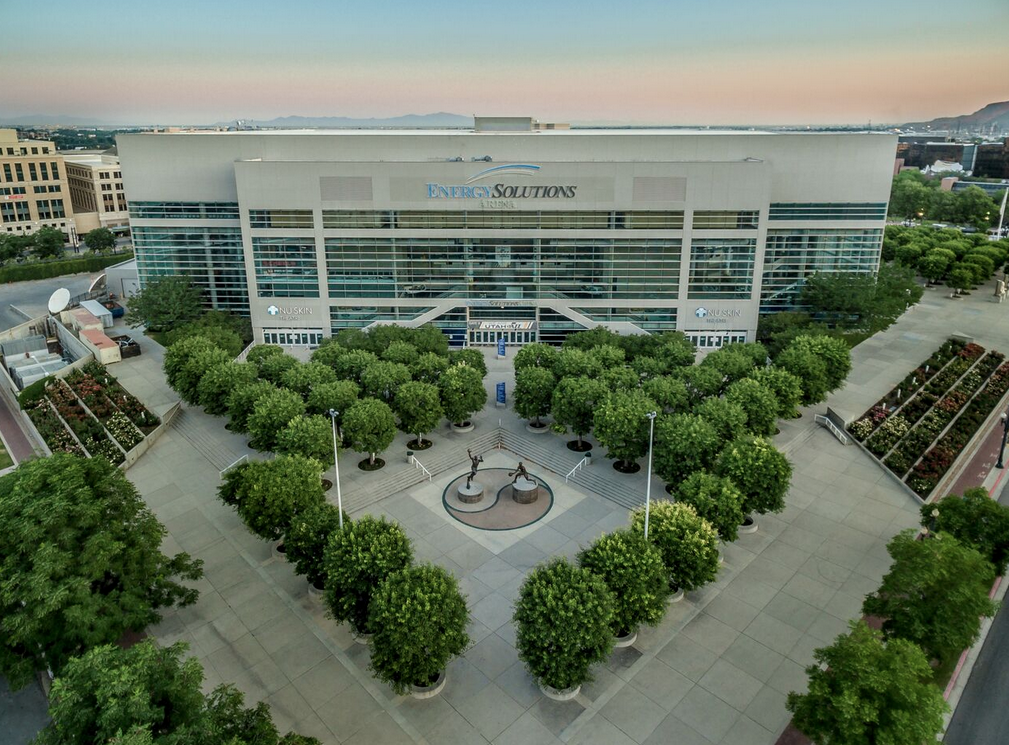
As the home of the Utah Jazz, the downtown arena has been the professional sports heartbeat of the community. Its emergence along West Temple has anchored an integral city hub, spawning new businesses, restaurants, hotels and shopping, light-rail connectors, and a complementary facility to the convention center. Its rising a quarter of a century ago to a gathering place for first-class entertainment in Utah was an act of personal sheer will.
By the summer of 1990, Larry and Gail Miller knew that purchasing the NBA’s Utah Jazz wasn’t enough to keep the team in the state. At the time, they were playing in the now defunct Salt Palace arena, which seated just more than 12,000 spectators. From conversations with former NBA Commissioner David Stern, the Millers knew that they needed a 20,000-seat arena with luxury suites to keep their small market team afloat.
In typical Miller fashion, Larry and Gail had a vision; one that no one believed could come to fruition, but with Larry’s relentless drive, they powered on. Larry and Gail rarely did things just for themselves; they usually had a broader vision in mind. They decided that they would go after an undeveloped, dilapidated block on what was then the far west side of downtown and work with the city’s redevelopment agency to bring a brand new, multi-use, 20,000-seat arena to Salt Lake City ahead of its time. They knew, that if they built it, Jazz fans, events, concerts and crowds would come.
“Larry and Gail always believed in giving back to the community,” said Larry H. Miller Group of Companies CEO, Clark Whitworth. “Putting together the financing for the arena was one of the hardest deals we ever did in our more than 20 years of working together. We learned a lot. If not for Larry’s pure passion for the project, Gail’s unwavering support, and what the project could do for this community, I’m not sure we could have pulled it off.”
By May of 1990, the Millers had secured the approvals and funds to build the arena. Their desire was to have the doors open for the first game of the 1991-92 Jazz season. This left only 15 months to build a nearly the venue. Because of this, the facility was being designed as it was being built, in phases.
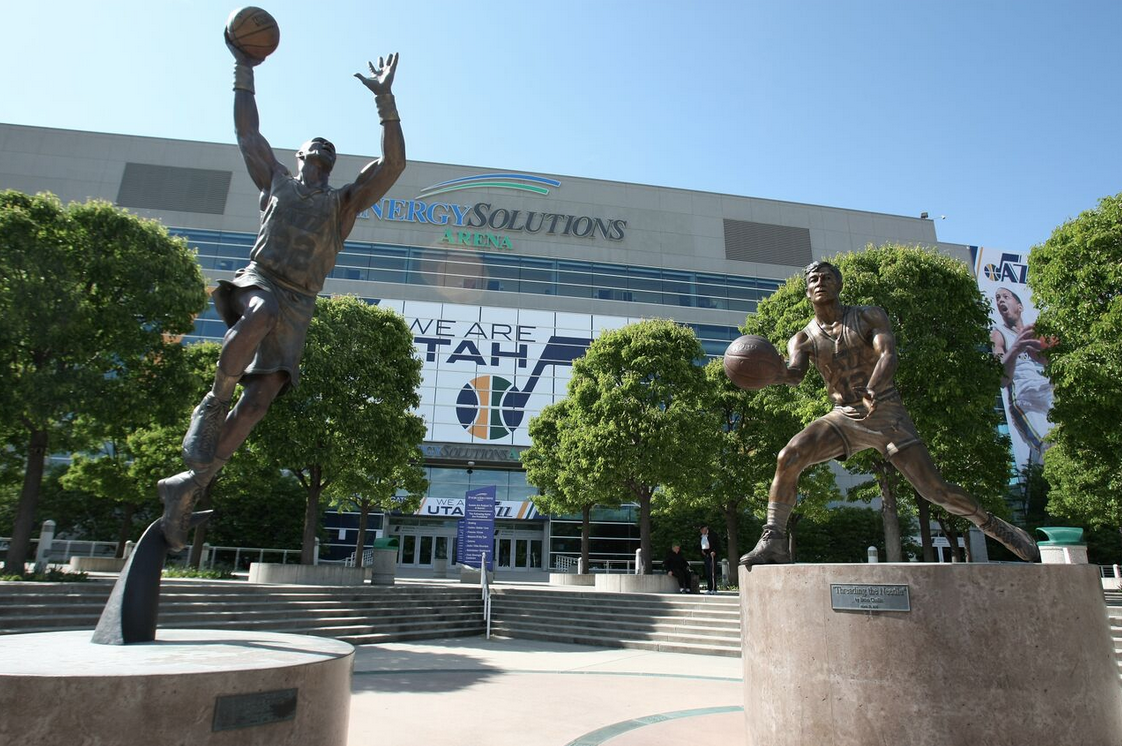
At the time, they also owned the International Hockey League’s Salt Lake Golden Eagles. The Eagles game against the Peoria Rivermen on Oct. 16, 1991 was the first public event hosted in the brand-new arena. The first headliner concert to play the location was Oingo Boingo on Oct. 24, 1991.
Mark Powell, vice president of events and general manager for the venue, recalls, “We opened the doors to the arena in October of 1991 to a sold-out Oingo Boingo concert. Since then, the facility has hosted nearly every major touring concert in the world including U2, the Rolling Stones and Garth Brooks. ,’ he said. “One of my favorite memories is from the 1997 NBA Playoffs. Tina Turner was on our stage while the Jazz were playing in Houston against the Rockets and John Stockton hit ‘the shot’ that sent us to the NBA Finals that season. The crowd roared and Ms. Turner could not figure out what was happening as the adulation was not in timing with her run of show.”
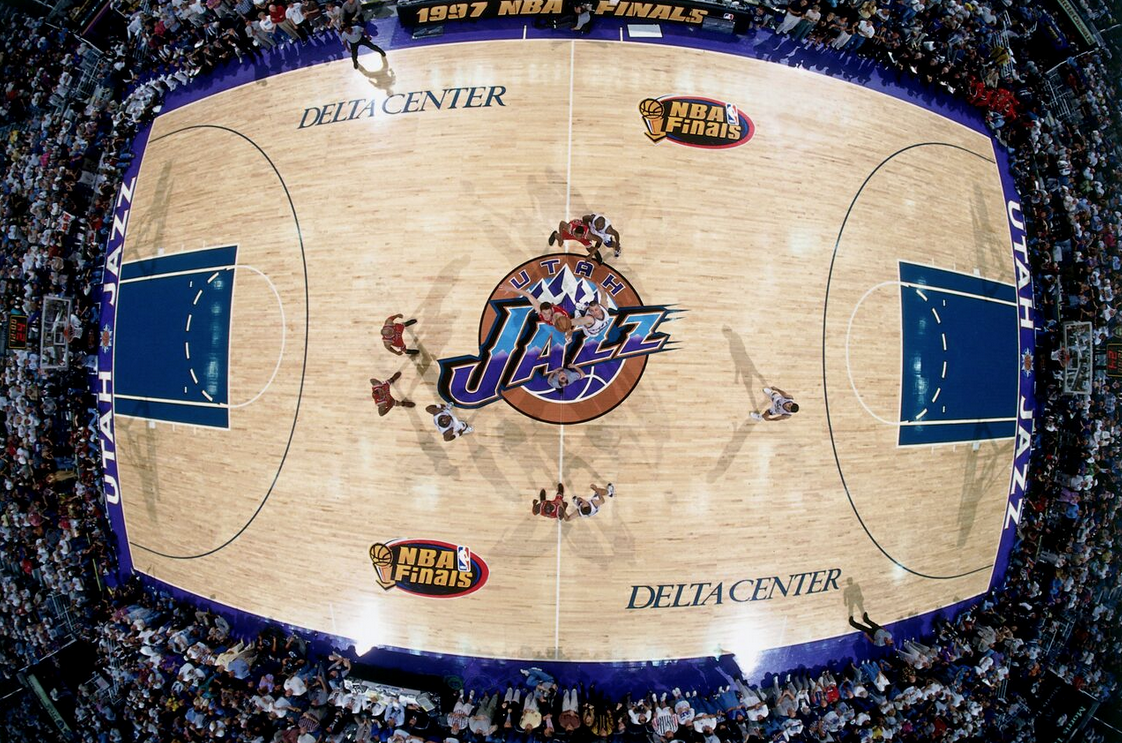
In 1993, the Utah Jazz hosted the NBA All-Star Game in Salt Lake City. Team President Randy Rigby recalls a special moment that not only brought players together, but also families and the community.
“I will always remember seeing the arena packed with not only NBA fans, but Jazz fans as well. At the end of the game, John and Karl (Malone) were holding up the co-MVP trophy with their small children in tow,” Rigby said. “This moment captured the spirit of Salt Lake and created an iconic memory for not only the Jazz basketball family, but for this community, which prides itself on being so family friendly as well.”
During the 2002 Olympic Winter Games, the venue was renamed the Salt Lake Ice Center, for the Games. The surprise gold-medal figure skating performance of American Sarah Hughes and the double-medal breakout of Apolo Anton Ohno in short track speed skating are among the many signature sports moments at the arena.
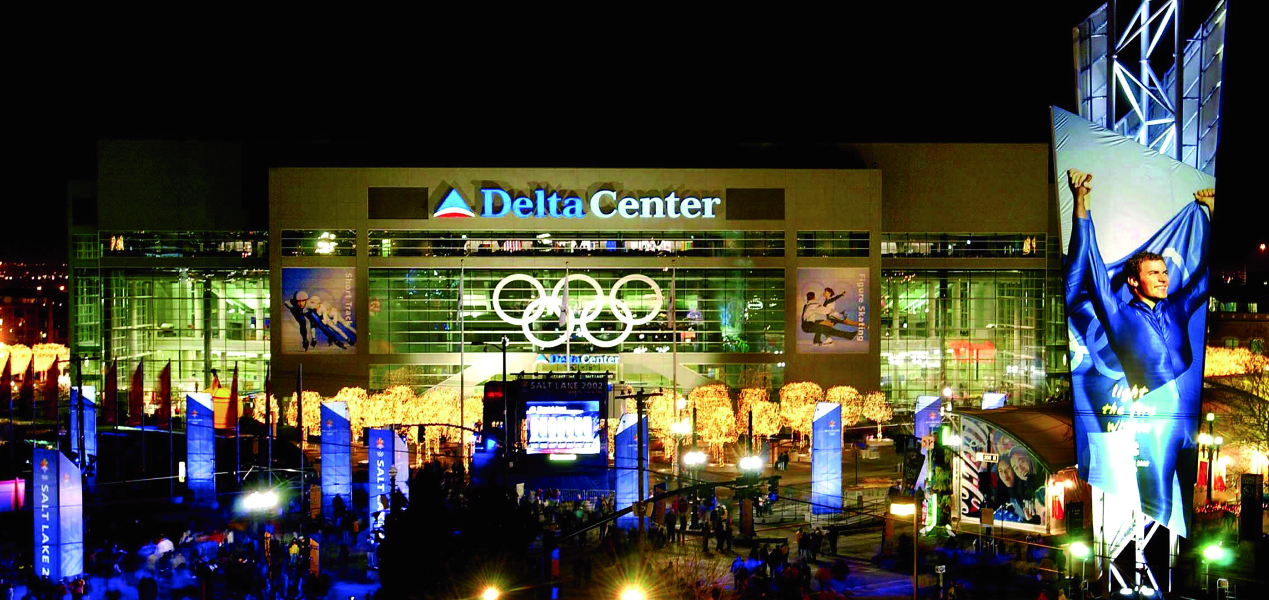
“Taking over the venue for 20 plus days in the middle of the NBA season was a remarkable feat. Without the generosity of Larry and Gail Miller, we would have not been able to make it happen,’” recalls Lori Kun, the sport manager for the Salt Lake Organizing Committee. “Many of the arena’s guest services staff, including greeters, ushers, and ticket takers volunteered their time for this once-in-a-lifetime experience. Larry personally spoke at our volunteer training session and it was incredibly emotional and inspirational for us all.”
Since the arena’s opening in 1991, 22 new facilities have been built around the league for NBA teams. Only six NBA arenas currently in use by the Golden State Warriors (1966), New York Knicks (1968), Milwaukee Bucks (1988), Sacramento Kings (1988), Detroit Pistons (1988) and Minnesota Timberwolves (1990) are older than the home of the Utah Jazz. Each of these franchises is in the process of building a new arena or implementing a significant renovation plan.
In the last five years, about $25 million has been invested into EnergySolutions Arena. With an emphasis on enhancing the fan experience, upgrades include an improved public address system, enlarged concourse entries with retail and food offerings, digital direction and concessions signage, the addition of the Legends Club, two Fanzz stores and the expansion of the main team store, and numerous energy efficiency projects. The most significant improvement was a $15 million investment prior to the 2013-14 season for the installation of a new high definition video display system and other building infrastructure. Appearing bigger than life, the center court video boards are seven times larger than their predecessor with twin, 42-foot-by-24-foot screens that run the length of the court.
The defining characteristic that brings the building its national renown is its sheer volume during Utah Jazz home games. Rigby notes, “The Jazz have a passionate and knowledgeable fan base that gives us a homecourt advantage. We have an enduring relationship with the community and sincerely appreciate the loyalty, enthusiasm and support of our fans.”
For nearly 25 years, it has been a shared experience with the community. The presence of the downtown arena has contributed to the economic vitality of the region, improved the quality of life through world-class entertainment and rallied citizens through the fandom of sports. With its 7.6 million pounds of rebar and more than 80,000 square feet of glass, the arena still has a personality that brings bright eyes and big smiles to its visitors of all ages.
